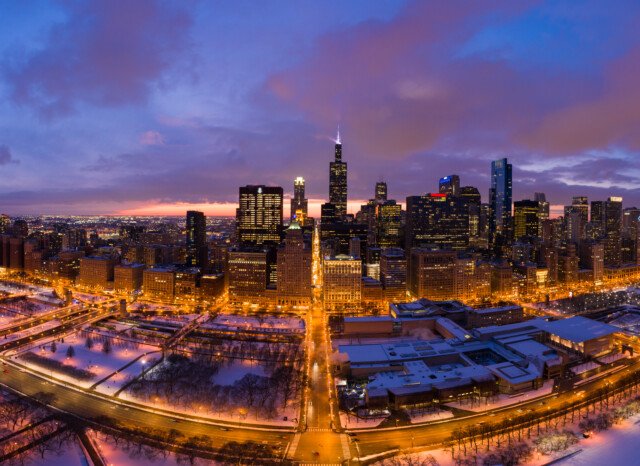New York City is in the state of New York. The city is composed of five boroughs: Manhattan, Brooklyn, Queens, The Bronx, and Staten Island.
The Hudson River flows through the southeastern part of the state, contributing to the city’s unique blend of urban and natural landscapes. NYC is known for its rich history and vibrant culture.
It’s a global hub for finance, arts, and innovation, making it a fascinating place to visit or live. When you explore the city, you’ll encounter iconic landmarks and diverse neighborhoods that reflect its dynamic story.
Key Takeaways
New York City is located in the state of New York. It comprises five boroughs: Manhattan, Brooklyn, Queens, The Bronx, and Staten Island. Situated in the northeastern region of the United States, NYC is positioned where the Hudson River flows through southeastern New York. Known for its diverse culture and iconic landmarks, NYC serves as a global hub.
Historical Background
New York City’s rich historical background is rooted in early American colonization and pivotal events like the Revolutionary War. As the largest city in the USA, New York City has always been at the heart of political activity and conflict during the formative years of the nation. The city played an important role in the fight for independence, with figures like Alexander Hamilton emerging as founding leaders who shaped America’s political landscape.
In those early days, New York City’s colonial settlements laid the groundwork for what would become a global hub for trade, finance, arts, and culture. The war sacrifices made here are woven into the fabric of its streets and landmarks. For instance, the Statue of Liberty, a gift from France in 1886, stands tall as a symbol of freedom and resilience, reminding us of the city’s enduring spirit.
Hamilton and other visionaries contributed to New York City’s prominence, making it a beacon of progress, diversity, and innovation. Its historical significance extends far beyond its borders, encapsulating the essence of striving for freedom and opportunity. This rich history is part of what makes New York City such a compelling and dynamic place to this day.
Geographical Location
As we shift our focus from the historical significance of New York City, let’s explore its geographical location within the state of New York.
Nestled in the northeastern United States, New York City sits at the mouth of the Hudson River, strategically positioned in southeastern New York. This vibrant metropolis is composed of five distinct boroughs: Manhattan, Brooklyn, Queens, The Bronx, and Staten Island. Each borough adds its own unique flavor to the city’s dynamic landscape.
New York City’s geographical location offers a mix of urban and coastal elements, enhancing its allure and freedom for exploration. The city’s coordinates are approximately 40.7128° N latitude and 74.0060° W longitude, placing it right at the heart of some of the most significant water bodies. Surrounded by New York Bay, the East River, and the Atlantic Ocean, the coastal geography of the city shapes its identity and lifestyle.
- Five boroughs: Manhattan, Brooklyn, Queens, The Bronx, Staten Island
- Hudson River: Major waterway flowing through southeastern New York
- Coastal geography: Defined by New York Bay, East River, Atlantic Ocean
- Northeastern United States: Regional context of New York City
- Unique urban landscape: Blend of urban and natural elements
Embrace the freedom to explore and discover the diverse geographical features of New York City.
Demographics and Culture
Let’s dive into the demographics and culture of New York City, a place known for its incredible diversity and vibrant atmosphere. As the most populous city in the United States, New York City’s metropolitan area is home to over 22.2 million people. This population showcases remarkable diversity, with a demographic breakdown that includes 55.4% White, 19.2% Hispanic or Latino, 17.6% African American, 9.0% Asian, and 1.0% Native American residents. These figures paint a picture of a city where a broad spectrum of cultural heritages coexist.
Each neighborhood in New York City offers a unique vibe, complete with its own distinct cuisines, languages, and traditions. For instance, the vibrant streets of Chinatown bring a slice of East Asia to life, while Greenwich Village is known for its artistic and bohemian vibes. Every corner of the city tells a different story, contributing to the rich tapestry that defines New York.
The cultural heritage of New York City is also reflected in its iconic landmarks, like the Statue of Liberty and Central Park, which attract visitors from around the world. The city’s arts scene is second to none, boasting world-renowned museums, theaters, and galleries. Whether you’re catching a Broadway show or watching a street performer in Times Square, New York City’s culture pulses with creativity and expression, making it a true cultural melting pot.
Economy and Industries
How does New York City’s economy manage to stay so robust and diverse? It’s a bustling metropolis where various industries thrive and innovate, creating a unique economic tapestry.
First and foremost, New York City’s finance sector, epitomized by Wall Street, stands as a global powerhouse. Banking, investment, and stock trading form the backbone of not just the city’s economy but the world’s. According to the New York Stock Exchange, it’s the largest stock exchange in the world by market capitalization.
The media industry in NYC also holds significant sway. With renowned television, film, theater, and publishing industries, the city exerts a profound cultural impact worldwide. Major media companies like The New York Times, NBC, and HBO call New York home, further cementing its status as a media capital.
Fashion in New York City is nothing short of legendary. Iconic designers, glittering fashion shows, and headquarters of major fashion houses make the city a fashion mecca. New York Fashion Week, one of the most important events in the fashion calendar, draws designers, buyers, and media from around the globe.
Technology is taking NYC by storm, too. The city’s tech ecosystem is booming, attracting startups and established tech firms alike, making it a hub for innovation. According to a report by Tech:NYC, the tech sector employs over 300,000 people in the city, contributing billions to its economy.
Here’s a quick recap:
- Finance: Global hub centered around Wall Street
- Media: Major influence in TV, film, theater, and publishing
- Fashion: Iconic designers and major fashion shows
- Technology: Rapidly growing tech ecosystem
- Cultural Impact: Significant worldwide influence across industries
New York City’s economy is a showcase of the power of diversity and innovation.
Major Landmarks
New York City dazzles with its array of iconic landmarks that draw millions of visitors each year. The Statue of Liberty, standing proudly on Liberty Island, embodies the essence of freedom and welcomes all who come to its shores. It’s not just a monument; it’s a symbol of hope and opportunity, given to the United States by France in 1886.
The Freedom Tower, also known as One World Trade Center, rises from the site of the 9/11 attacks, standing as a tribute to resilience and renewal. Its presence in the city’s skyline is both historic and modern, capturing the spirit of New York City. Completed in 2013, it now serves as the tallest building in the Western Hemisphere.
Historic bridges like the Manhattan Bridge and Brooklyn Bridge connect the boroughs, offering stunning views and a slice of history. The Brooklyn Bridge, completed in 1883, was the first steel-wire suspension bridge and remains an engineering marvel. Walking across these bridges, you can feel the pulse of the city and see its ever-evolving skyline.
Central Park serves as a green oasis amid the urban jungle. Designed by Frederick Law Olmsted and Calvert Vaux, it opened in 1858 and has since been a beloved landmark where you can escape the hustle and bustle, whether you’re strolling through its pathways or lounging on the Great Lawn.
New York City’s landmarks aren’t just structures; they’re pieces of a living, breathing tapestry that tell the story of a city like no other.
Frequently Asked Questions
Which State New York City Belongs To?
New York City, with its rich history and diverse culture, is part of New York State. It’s well-known for its distinct neighborhoods, iconic landmarks, bustling arts scene, incredible food, and vibrant economy. The city’s unique geography and infrastructure contribute to its distinctive character.
Is New York Both a City and a State?
It can be a bit confusing, but New York is both a state and a city. New York City is an urban metropolis located within the state of New York. It has its own political divisions, administrative regions, and municipal governance that define its city limits.
What Are the 3 States of New York?
It sounds like you’re asking about different regions within New York rather than separate states. New York can be broadly divided into several regions: Upstate New York, Western New York, Central New York, the Finger Lakes Region, the Hudson Valley, Long Island, the Adirondack Mountains, the Catskill Mountains, the Capital Region, and the North Country. Each of these areas has its own unique geography, culture, and attractions.
What Are the 5 States of New York City?
There aren’t five states in New York City. Instead, the city consists of five boroughs: Manhattan, Brooklyn, Queens, The Bronx, and Staten Island. Each borough has its own unique cultural diversity, vibrant tourist attractions, and robust transportation infrastructure. However, they all share ongoing challenges in housing affordability, public safety, and healthcare access.





